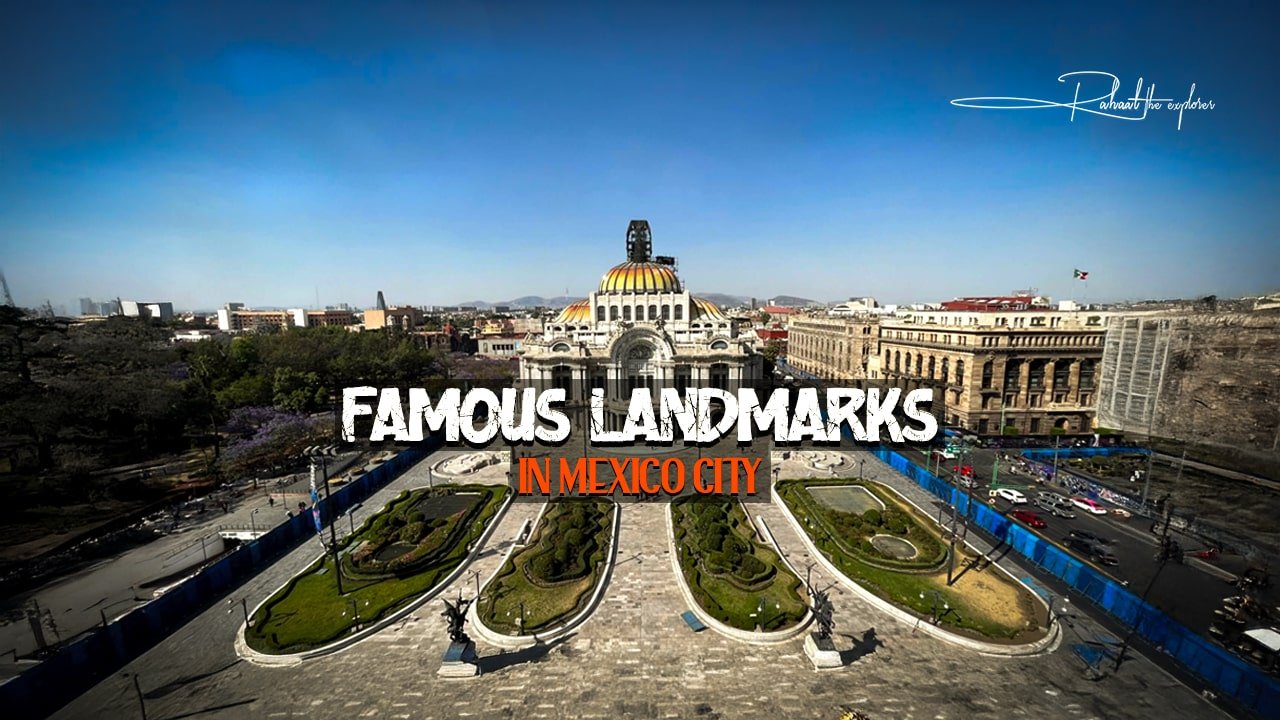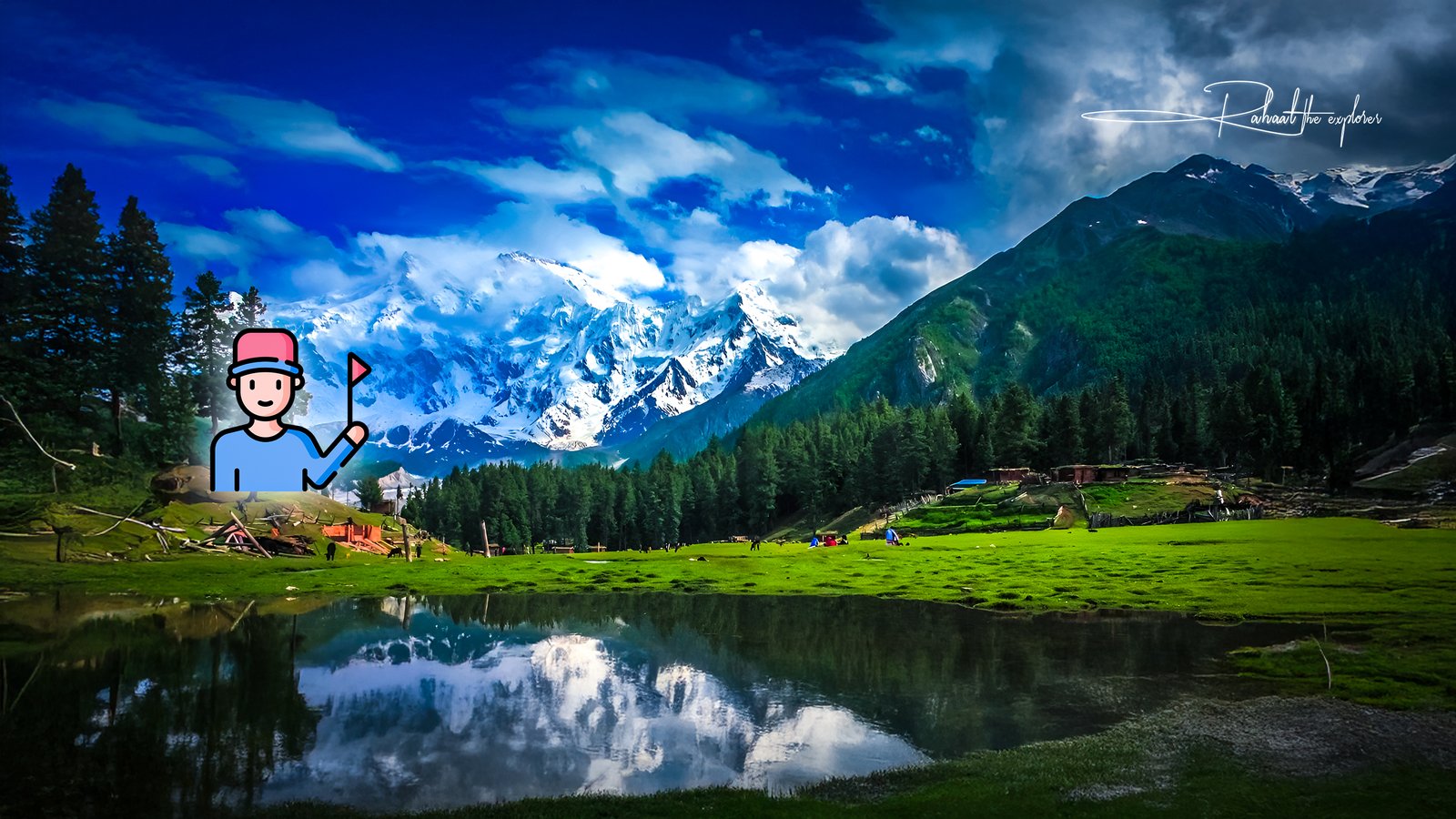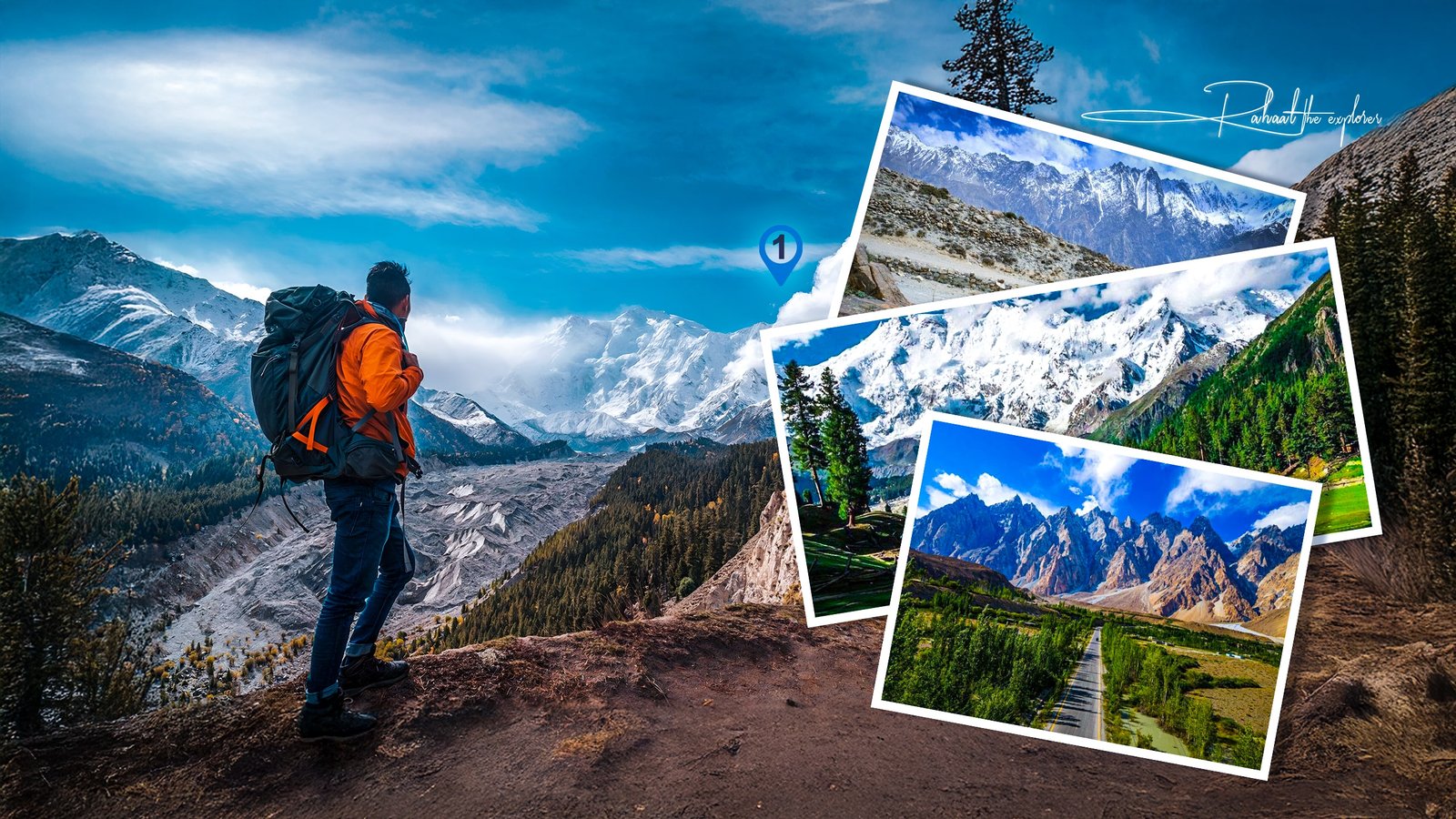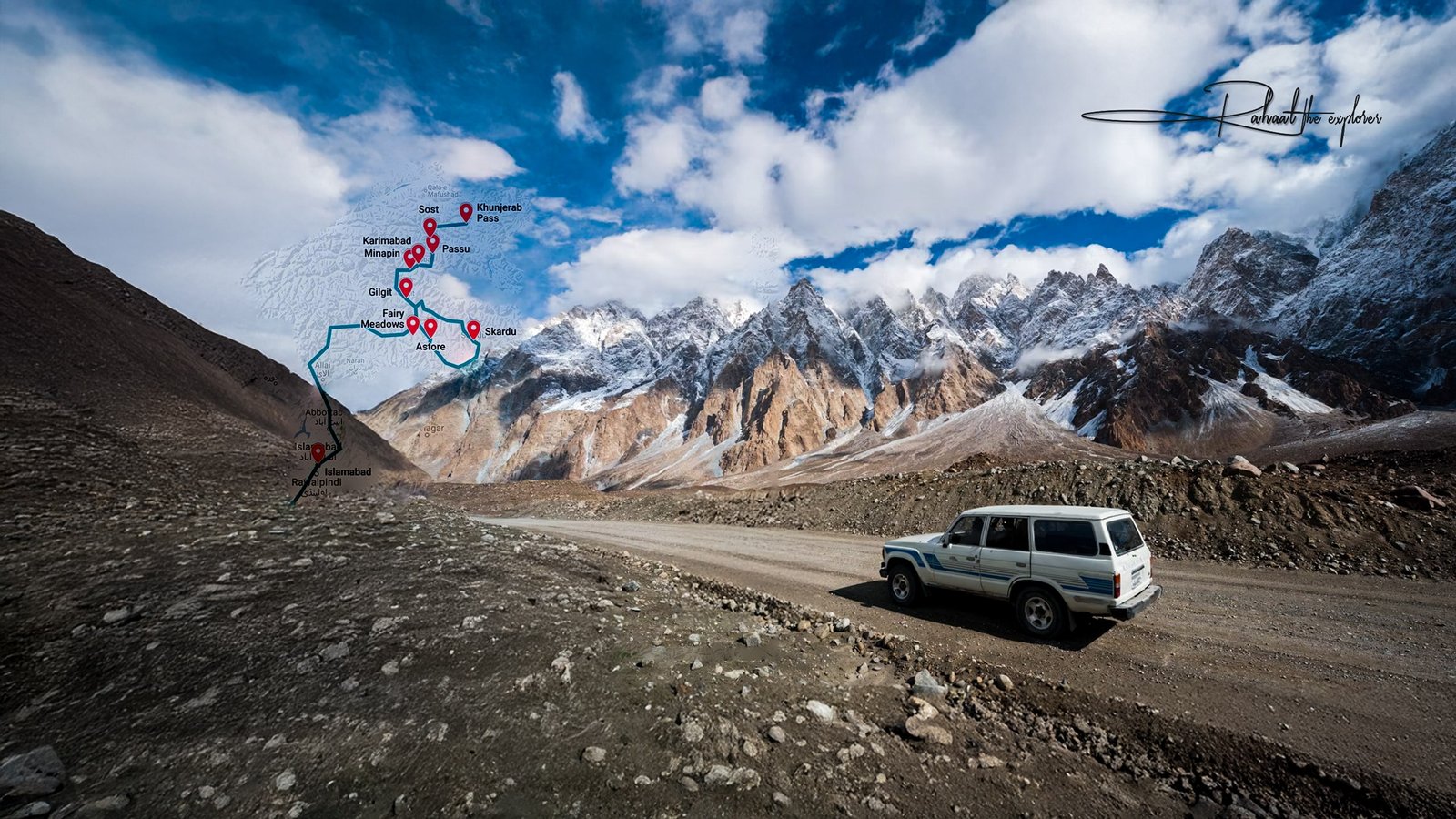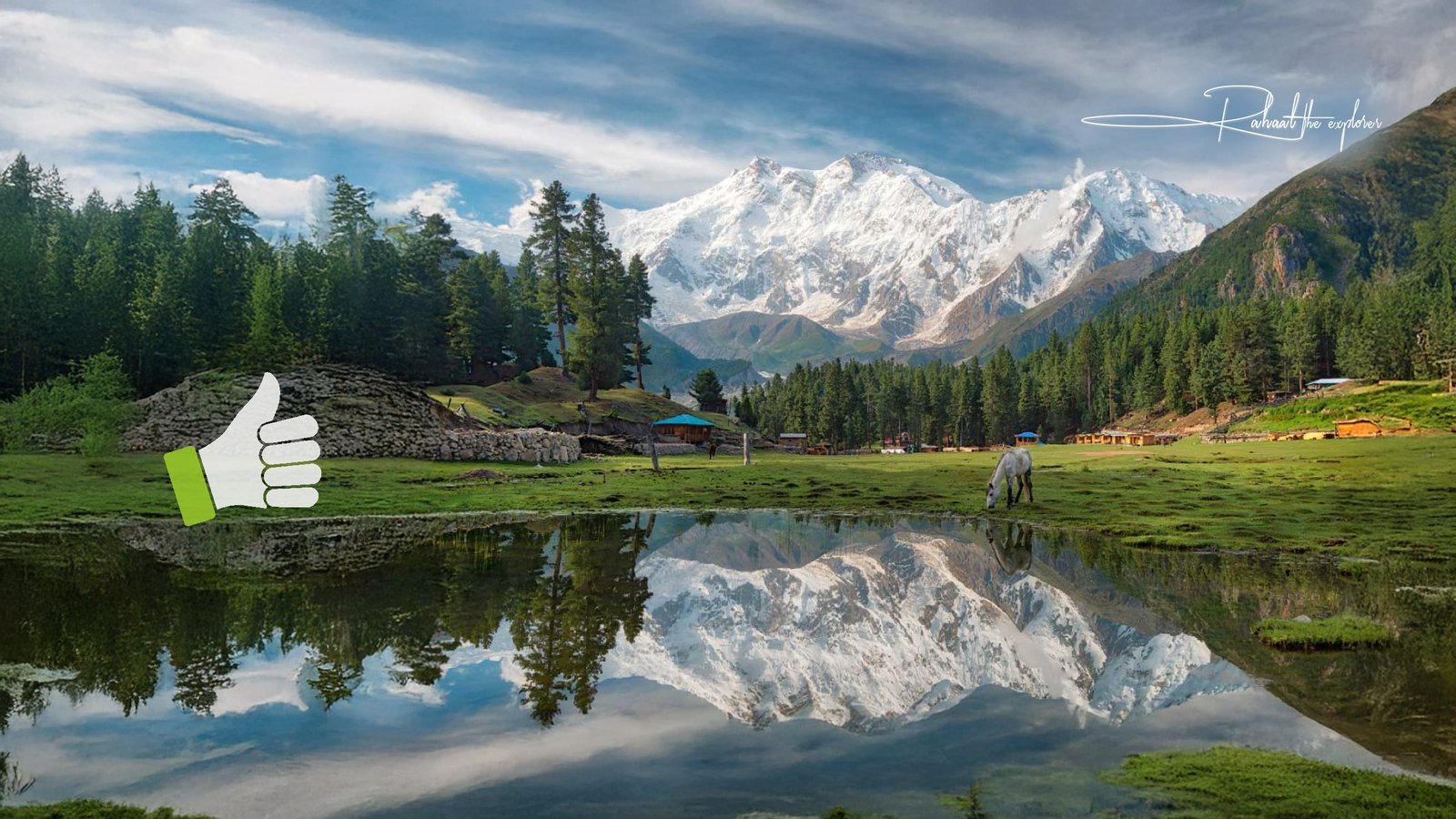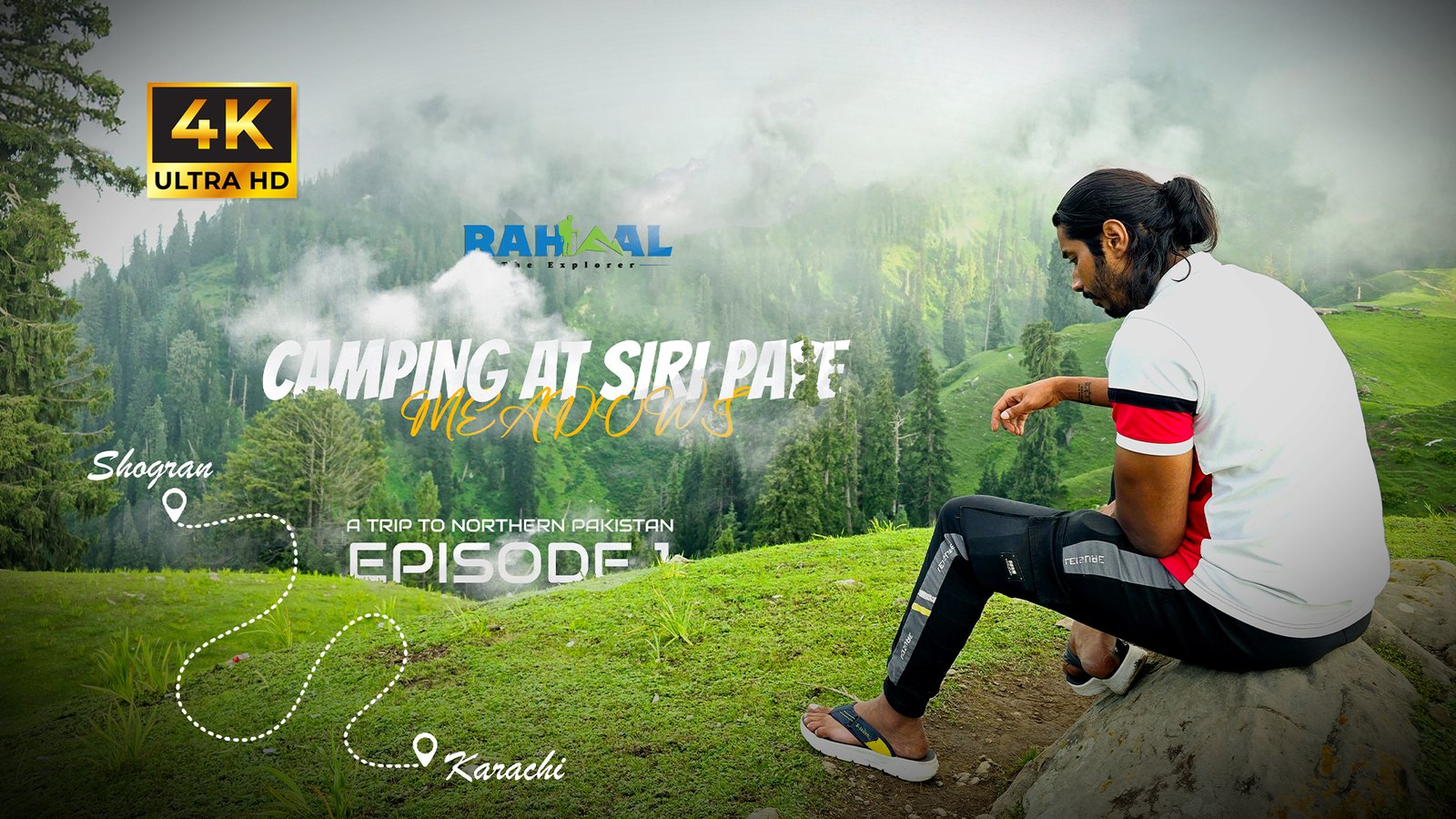Mexico City, one of the largest and most vibrant cities in the world, is a destination that perfectly blends ancient history, colonial heritage, and modern culture. From the mysterious Aztec ruins of Templo Mayor to the grandeur of Chapultepec Castle, the landmarks in Mexico City tell a story that spans thousands of years.
In this detailed travel guide by Rahaal the Explorer, we’ll take you through the most famous landmarks in Mexico City, uncovering their historical significance, architectural marvels, and insider tips for your visit.
Why Visit Mexico City’s Landmarks?
Few cities can rival Mexico City when it comes to the diversity of landmarks. Whether you’re a history enthusiast, art lover, foodie, or casual explorer, every neighborhood (or colonia) has something spectacular to offer.
- Rich history: From Aztec ruins to Spanish colonial architecture.
- UNESCO World Heritage sites: The Historic Center and Xochimilco are both protected cultural treasures.
- Vibrant culture: Museums, murals, plazas, and markets bring history to life.
Exploring these landmarks is not just sightseeing — it’s walking through centuries of stories.
1. Zócalo (Plaza de la Constitución)
Location: Historic Center
Best for: Cultural, political, and architectural history
The Zócalo, or main square, is the heart of Mexico City. Once the ceremonial center of the Aztec capital Tenochtitlan, today it’s surrounded by iconic landmarks such as the National Palace and Metropolitan Cathedral.
Highlights:
- Metropolitan Cathedral: The largest cathedral in Latin America, featuring baroque and neoclassical styles.
- National Palace: Home to Diego Rivera’s famous murals depicting Mexican history.
- Cultural Events: The Zócalo hosts parades, festivals, and concerts throughout the year.
Travel Tip: Visit early in the morning to admire the architecture without the crowds.
2. Templo Mayor
Location: Just off the Zócalo
Best for: Ancient Aztec history
Hidden beneath the city streets lies the ancient Aztec temple complex known as Templo Mayor. Excavated in the 20th century, it reveals the remains of pyramids, offerings, and sculptures from the Mexica civilization.
Why Visit:
- See the original foundations of Tenochtitlan.
- Explore the Templo Mayor Museum, displaying Aztec artifacts like the famous Coyolxauhqui Stone.
- Understand how ancient and modern Mexico City coexist.
Travel Tip: Combine your visit with a walk around the Historic Center to see the layers of history.
3. Chapultepec Castle (Castillo de Chapultepec)
Location: Chapultepec Park
Best for: Architecture, views, and museums
Sitting atop Chapultepec Hill, this castle offers panoramic views of the city. It’s one of the few castles in the Americas to have housed royalty — Emperor Maximilian I and Empress Carlota during the 19th century.
Highlights:
- National Museum of History: Displays royal furniture, paintings, and artifacts.
- Terrace Views: Offers breathtaking views of Paseo de la Reforma and the city skyline.
- Lush Gardens: Perfect for photography and relaxation.
Travel Tip: Arrive early to enjoy the castle and then spend the rest of the day exploring Chapultepec Park, one of the largest urban parks in the world.
4. Palacio de Bellas Artes (Palace of Fine Arts)
Location: Juárez, near Alameda Central
Best for: Art, architecture, and performance
The Palacio de Bellas Artes is often regarded as Mexico City’s most beautiful building. Its marble façade and domed roof draw visitors from around the globe, while inside you’ll find world-renowned murals and cultural performances.
Highlights:
- Murals by Rivera, Orozco, and Siqueiros: Explore Mexico’s most famous muralists under one roof.
- Architecture: A mix of Art Nouveau and Art Deco styles.
- Events: Home to the National Opera and Ballet Folklórico de México.
Travel Tip: Visit around sunset to capture the palace’s golden glow from the rooftop café of Sears across the street.
5. Teotihuacan
Location: ~30 miles northeast of Mexico City
Best for: Ancient civilizations and pyramids
Though slightly outside the city, Teotihuacan is one of the most iconic landmarks near Mexico City. This ancient city predates the Aztecs and features the Pyramid of the Sun, one of the largest pyramids in the world.
Highlights:
- Pyramid of the Sun: Climb to the top for panoramic valley views.
- Pyramid of the Moon: Smaller but equally significant with ritual platforms.
- Avenue of the Dead: Walk the main thoroughfare lined with ancient temples.
Travel Tip: Visit early morning to avoid heat and crowds. Guided tours provide fascinating historical context.
6. Frida Kahlo Museum (Casa Azul)
Location: Coyoacán
Best for: Art, culture, and history lovers
Known as the Blue House, the Frida Kahlo Museum celebrates the life and art of Mexico’s most iconic painter. Set in her former home, it’s filled with personal belongings, original artwork, and intimate details of her life with Diego Rivera.
Highlights:
- Original Artworks: See Frida’s self-portraits and sketches.
- Personal Artifacts: Letters, dresses, and household items give insight into her world.
- Lush Courtyard: A tranquil escape amid vibrant blue walls.
Travel Tip: Tickets often sell out — book online in advance to secure entry.
7. Basilica of Our Lady of Guadalupe
Location: Northern Mexico City
Best for: Religious history and architecture
The Basilica of Guadalupe is one of the most visited Catholic pilgrimage sites in the world. Built where the Virgin Mary is said to have appeared to Juan Diego in 1531, it’s a symbol of faith and unity.
Highlights:
- Old Basilica (Basilica Antigua): Baroque-style church from the 16th century.
- New Basilica: Modern circular structure that can hold over 10,000 people.
- Tilma of Juan Diego: The cloak displaying the miraculous image of the Virgin of Guadalupe.
Travel Tip: Visit early on weekdays to avoid pilgrimage crowds, especially around December 12 (Feast Day).
8. Coyoacán Neighborhood
Location: South Mexico City
Best for: Colonial charm and local life
Coyoacán is one of Mexico City’s oldest and most picturesque neighborhoods. With cobblestone streets, colorful houses, and shaded plazas, it feels worlds away from the hustle of the metropolis.
Highlights:
- Coyoacán Market: Taste local dishes like tostadas and churros.
- Plaza Hidalgo & Jardín Centenario: Relax and people-watch.
- Museo Nacional de las Culturas Populares: Showcasing Mexican folk art.
Travel Tip: Visit on weekends for live music and local craft vendors.
9. Angel of Independence (El Ángel)
Location: Paseo de la Reforma
Best for: Photography and national pride
A symbol of Mexico’s independence, the Angel of Independence stands tall in the heart of modern Mexico City. This golden monument is one of the city’s most recognizable icons.
Highlights:
- Panoramic Views: The base contains a staircase leading up to a small observation deck.
- Monumental Sculptures: Depict Mexico’s struggle for independence.
- Vibrant Atmosphere: Surrounded by restaurants, hotels, and nightlife.
Travel Tip: Visit at night when the monument is beautifully illuminated.
10. Xochimilco Canals
Location: Southern Mexico City
Best for: Culture, nature, and fun experiences
A UNESCO World Heritage site, Xochimilco preserves remnants of the Aztec canal system. Today, visitors can ride colorful trajineras (flat-bottom boats) along the waterways, enjoying food, mariachi music, and local festivities.
Highlights:
- Trajinera Rides: Rent a boat with friends or family for a floating picnic.
- Chinampas: Traditional floating gardens that showcase ancient farming techniques.
- Cultural Experience: Vendors sell snacks, drinks, and handmade crafts.
Travel Tip: Weekends are lively and crowded; visit on weekdays for a calmer ride.
11. Museo Nacional de Antropología (National Museum of Anthropology)
Location: Chapultepec Park
Best for: Ancient civilizations and history buffs
This world-class museum is one of Mexico’s most important cultural institutions. Its vast collection spans the pre-Hispanic era, covering Aztec, Maya, Olmec, and other indigenous civilizations.
Highlights:
- Aztec Calendar Stone: Also known as the Sun Stone, a national treasure.
- Mayan Exhibit: Features jade masks, stelae, and intricate carvings.
- Outdoor Gardens: Perfect for reflection and relaxation.
Travel Tip: Allocate at least half a day — the museum’s size can be overwhelming.
12. Torre Latinoamericana
Location: Downtown Mexico City
Best for: Panoramic city views
Once the tallest skyscraper in Latin America, the Torre Latinoamericana remains a popular spot for panoramic views of the city’s sprawling skyline.
Highlights:
- Observation Deck: Offers 360° views from 44 stories up.
- History Museum: Documents the tower’s resilience during earthquakes.
- Café and Bar: Enjoy a drink with unbeatable views.
Travel Tip: Visit at sunset for the best photos of the city.
Quick Summary: Top Landmarks in Mexico City
| Landmark | Type | Highlight |
|---|---|---|
| Zócalo | Historical Square | Heart of Mexico City |
| Templo Mayor | Archaeological Site | Ancient Aztec ruins |
| Chapultepec Castle | Historical Museum | Royal architecture & views |
| Palacio de Bellas Artes | Cultural Landmark | Art & performances |
| Teotihuacan | Archaeological Site | Ancient pyramids |
| Frida Kahlo Museum | Cultural Landmark | Life & art of Frida Kahlo |
| Basilica of Guadalupe | Religious Site | Pilgrimage destination |
| Coyoacán | Neighborhood | Colonial charm |
| Angel of Independence | Monument | Symbol of national pride |
| Xochimilco Canals | UNESCO Site | Traditional canal rides |
| Museum of Anthropology | Cultural Museum | Ancient civilizations |
| Torre Latinoamericana | Modern Landmark | City views |
FAQs About Landmarks in Mexico City
Q1: What is the most famous landmark in Mexico City?
The Zócalo and Palacio de Bellas Artes are among the most recognized landmarks, symbolizing the city’s rich history and culture.
Q2: How many landmarks should I visit in Mexico City?
Ideally, plan to visit 8–10 landmarks over 4–5 days to experience both ancient and modern attractions comfortably.
Q3: Are landmarks in Mexico City safe to visit?
Yes, most popular sites are safe during the day. Use normal precautions and stay in well-traveled areas.
Q4: What’s the best way to get around Mexico City?
Use Uber, the Metro, or guided tours for efficiency and safety. Walking tours are great in the Historic Center.
Q5: When is the best time to visit Mexico City?
The best time is March to May and September to November, when weather is mild and festivals are abundant.
Conclusion
Exploring the famous landmarks in Mexico City is like traveling through time. From Aztec pyramids to baroque cathedrals and modern skyscrapers, every corner of this metropolis tells a fascinating story. Whether you’re a first-time visitor or a returning explorer, these landmarks capture the essence of Mexico’s soul — vibrant, historic, and endlessly inspiring.
So pack your camera, lace up your walking shoes, and let Rahaal the Explorer guide you through the heart of Mexico City — one landmark at a time.


